 |
Home | Charity | Feedback |
Canada:
Banff,
Jasper,
Montreal,
Niagara Falls,
Niagara Falls (Visit 2),
Niagara-on-the-Lake,
Niagara on the Lake (Visit 2),
Quebec City,
Toronto,
Toronto (Visit 2),
Vancouver,
Victoria
Toronto, Ontario, Canada: Up and above by Prakash Bang, Editor in Chief 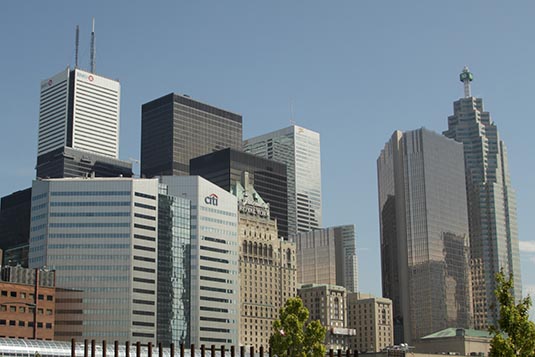 Toronto, on the north shore of Lake Ontario, is the largest of Canada's vibrant urban centres. It is the hub of the nation's commercial, financial, industrial, and cultural life, and is the capital of the Province of Ontario. People have lived here since shortly after the last ice age, although the urban community only dates to 1793 when British colonial officials founded the 'Town of York' on what then was the Upper Canadian frontier. 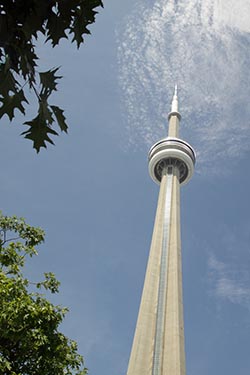 That backwoods village grew to become the 'City of Toronto' in 1834, and through its subsequent evolution and expansion Toronto has emerged as one of the most liveable and multicultural urban places in the world today. Growing skywards, the city reminds us of Manhattan in New York City. In fact, it would be right to say that what New York is to USA, Toronto is to Canada.
That backwoods village grew to become the 'City of Toronto' in 1834, and through its subsequent evolution and expansion Toronto has emerged as one of the most liveable and multicultural urban places in the world today. Growing skywards, the city reminds us of Manhattan in New York City. In fact, it would be right to say that what New York is to USA, Toronto is to Canada.
I was part of the Mauiva Aircruise group visiting the East Coast. A night before we were at the Sheraton at Niagara Falls. Our plan was to spend a few hours in Toronto and return back to Niagara Falls for the night with an enroute stop at Niagara-by-the-Lake. Post breakfast (enjoying your morning meal on the 13th floor at Fallview Restaurant overlooking both of the mighty falls was a pleasant dose of booster tonic) we hopped on our bus that left at 8:30AM. Toronto is about 100 kms from Niagara Falls. Now that you are in Canada you would need to adjust your mind to the metric system. Foot becomes Metre; Pound becomes Kilogram; but thankfully Second remains Second! 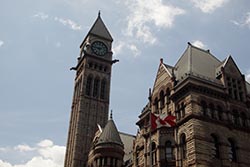 Canada has a massive landmass. Not only is the country big in size but is also beautiful and its folks keep it that way. Citizens are highly conscious about the upkeep of their neighbourhood which was evident as we drove along the road to Toronto.
Canada has a massive landmass. Not only is the country big in size but is also beautiful and its folks keep it that way. Citizens are highly conscious about the upkeep of their neighbourhood which was evident as we drove along the road to Toronto.
Canada has an extremely large number of lakes. The number of lakes larger than 3 square kilometres is estimated at close to 31,752 by the Atlas of Canada, with 561 lakes with a surface area larger than 100 square kilometers. Almost 9% of Canada's total area is covered by freshwater. There is no official estimate of the number of smaller lakes... they run into hundreds of thousands! Good to know that you can buy and sell lakes at an auction that happens every Sunday in Toronto! 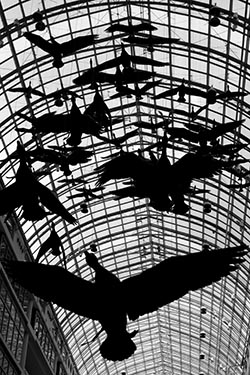 The country is also lucky in the sense that it shares its borders with the USA. Indirectly, this has come as a boon as no one would dare to invade Canada without antagonizing the Big Brother. Canada is basking under the shadow. It is saving tons of money that otherwise would have gone in its defense. That it was once at war with America is quite another story.
The country is also lucky in the sense that it shares its borders with the USA. Indirectly, this has come as a boon as no one would dare to invade Canada without antagonizing the Big Brother. Canada is basking under the shadow. It is saving tons of money that otherwise would have gone in its defense. That it was once at war with America is quite another story.
Since we had two brief stops (Floral Clock & Brock’s Monument) on the way, it was 11AM by the time we reached Toronto. Our first stop was obviously the Canadian National Tower more popularly known as CNT. The CN Tower is the world's tallest tower at 553.33 meteres. It has the world's longest metal staircase and world's highest wine cellar as well. The CN Tower was built by Canadian National Railways in 1976. Well, with coming up of other structures in China and UAE, strictly speaking the CNT is no longer the tallest. However, it does remain so in the Western Hemisphere notwithstanding the technical qualification of what makes one really the tallest! Every building has its own version. 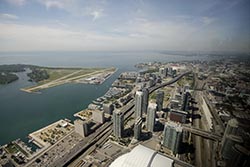 The tour price included a ticket to visit CNT’s observation deck and the glass bottom lookout. View from up there was simply outstanding. Thankfully, the sky was quite clear and we could get a 360 degrees view of the city and miles (oops, kilometers) beyond. When in Toronto this is one must do.
The tour price included a ticket to visit CNT’s observation deck and the glass bottom lookout. View from up there was simply outstanding. Thankfully, the sky was quite clear and we could get a 360 degrees view of the city and miles (oops, kilometers) beyond. When in Toronto this is one must do.
Just around the base of CNT is a railway museum. Few locomotives are on display along with a turn table. Visitors can walk around freely. Just nearby is Rogers Center. Home to Bluejays, this was the world’s first stadium to have introduced retractable roof allowing the spectators to enjoy the games in all kind of weather. 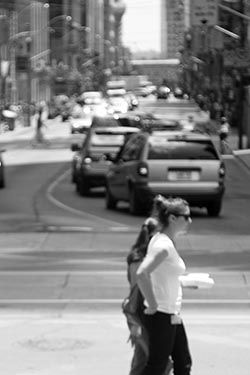 It was time for lunch. And what better place than to visit Toronto Eaton Centre? Well, don’t get me wrong with the word ‘eat on’. Actually, located at the south-west corner of Yonge Street and Dundas Street, Toronto Eaton Centre is a mall and a place like no other. Its spectacular glass galleria soars above a fascinating selection of more than 230 retailers, restaurants and services. Its food court offers a very wide selection of cuisine. Those with more time on hand would love to spend a day at the centre. After grabbing a quick lunch, I explored the mall a bit and was ready to board the bus that would take us to the Town Hall via detour through Toronto’s many streets.
It was time for lunch. And what better place than to visit Toronto Eaton Centre? Well, don’t get me wrong with the word ‘eat on’. Actually, located at the south-west corner of Yonge Street and Dundas Street, Toronto Eaton Centre is a mall and a place like no other. Its spectacular glass galleria soars above a fascinating selection of more than 230 retailers, restaurants and services. Its food court offers a very wide selection of cuisine. Those with more time on hand would love to spend a day at the centre. After grabbing a quick lunch, I explored the mall a bit and was ready to board the bus that would take us to the Town Hall via detour through Toronto’s many streets.
Some of the streets we romanced were University Avenue, Spadina Avenue, Parliament Street, Lakeshore Boulevard and Queen Street. The journey giving me insights of this beautiful city and its people. While we had a bus at our disposal, visitors without vehicles can easily move around using Toronto’s excellent transportation system. On weekends and holidays a $10 day pass will give unlimited access to Toronto’s subway, buses and streetcars. Of course, single ride tickets are available starting at $3 per ride. 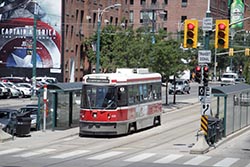 To move around downtown, one can use PATH – unique to Toronto. PATH is downtown Toronto's underground walkway linking 28 kilometres of shopping, services and entertainment. Follow PATH and you'll reach your downtown destination easily in weatherproof comfort. Each letter in PATH is a different colour, each representing a direction. The P is red and represents south. The orange A directs pedestrians to the west, while the blue T directs them to the north. The H is yellow and points to the east.
To move around downtown, one can use PATH – unique to Toronto. PATH is downtown Toronto's underground walkway linking 28 kilometres of shopping, services and entertainment. Follow PATH and you'll reach your downtown destination easily in weatherproof comfort. Each letter in PATH is a different colour, each representing a direction. The P is red and represents south. The orange A directs pedestrians to the west, while the blue T directs them to the north. The H is yellow and points to the east.
Politically, Canada has 10 Provinces. Ontario is one of them. Member of Parliaments are elected by the people. All official transactions in Canada happen in English and French. In fact, I am told that in Quebec Province a visitor may find himself in a corner for not knowing French – the locals are not comfortable using the English language, though they might know it well. 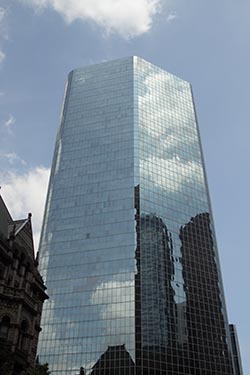 Toronto Old City Hall was one of the largest buildings in Toronto and the largest civic building in North America. Although it is called Old City Hall, it is not actually the oldest one, it is the third one. Toronto’s third City Hall is located in 60 Queen Street West, heart of the city’s financial district. Edward James Lennox who was the winner of Toronto architecture competition finally accepted the council’s offer of a fee for his services in 1887.
Toronto Old City Hall was one of the largest buildings in Toronto and the largest civic building in North America. Although it is called Old City Hall, it is not actually the oldest one, it is the third one. Toronto’s third City Hall is located in 60 Queen Street West, heart of the city’s financial district. Edward James Lennox who was the winner of Toronto architecture competition finally accepted the council’s offer of a fee for his services in 1887.
The building was under construction for more than a decade with a cost of more than $2.5 million. Due to the high thickness of the basement walls (more than 7 feet thick) and the massive foundation, the progress of the building was quite slow. Also devoting so much attention and time to details on exterior and interior of the building was possibly another reason to slow down the progress. The building is made of grey and red stone from Ontario’s Credit River Valley and New Brunswick. The advantage of the used material is that it is fairly resistant to water and weather fluctuations, and has the textural characteristic of stone. Our group was allowed in to take a look at the interiors and inspect the hallway, few rooms and exhibits. It was 3PM. Time to turn back and explore Canada’s another beautiful lakeside town – Niagara-on-the-Lake. Toronto Image Gallery  Photo viewer Photo viewer
|
|
|
Home |
Charity |
Feedback
Privacy Policy | Terms of Usage © YoGoYo.com. All rights reserved. |





























